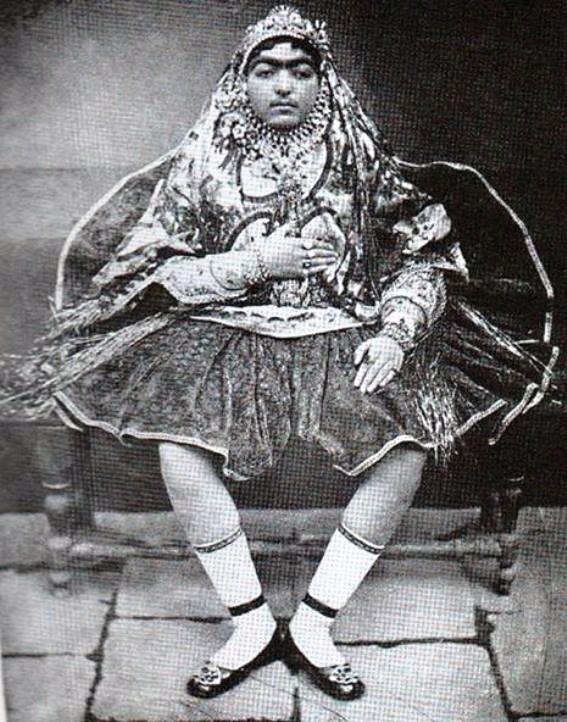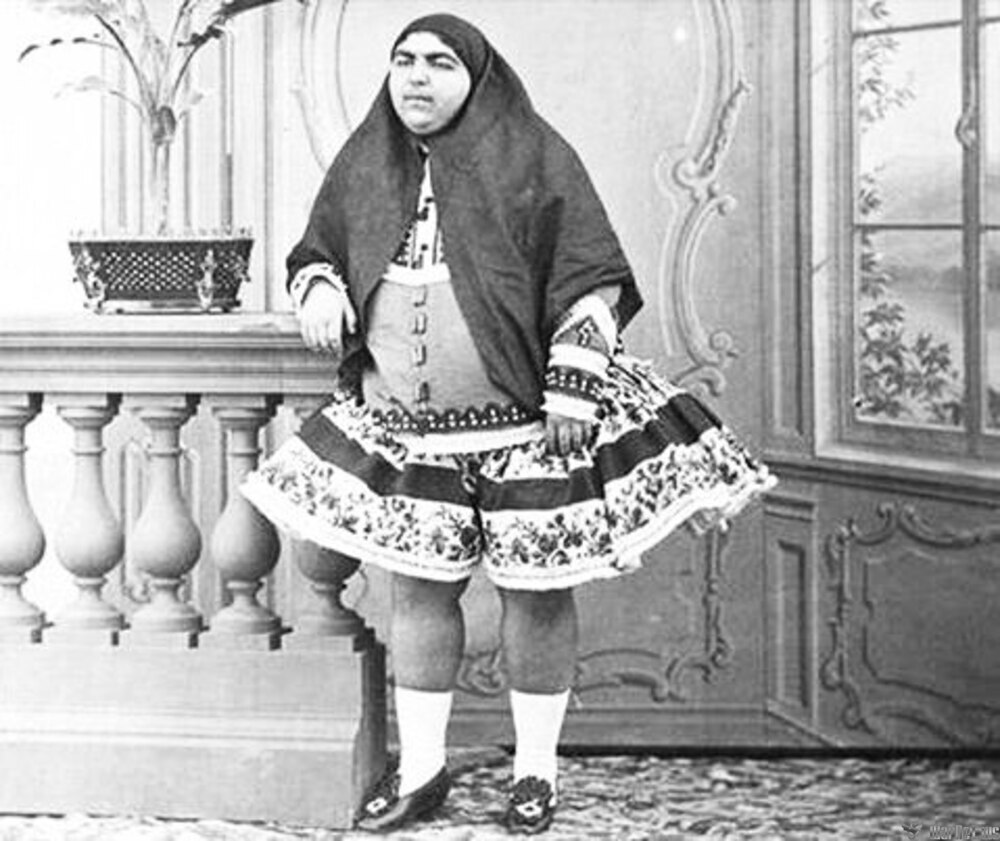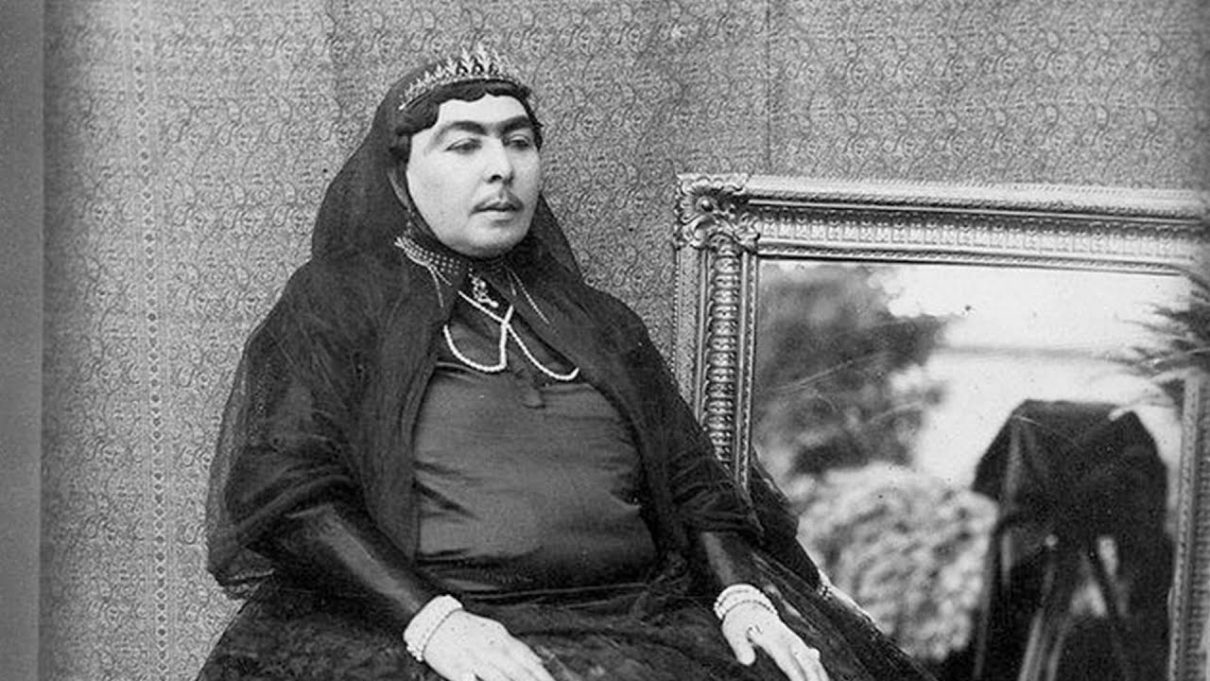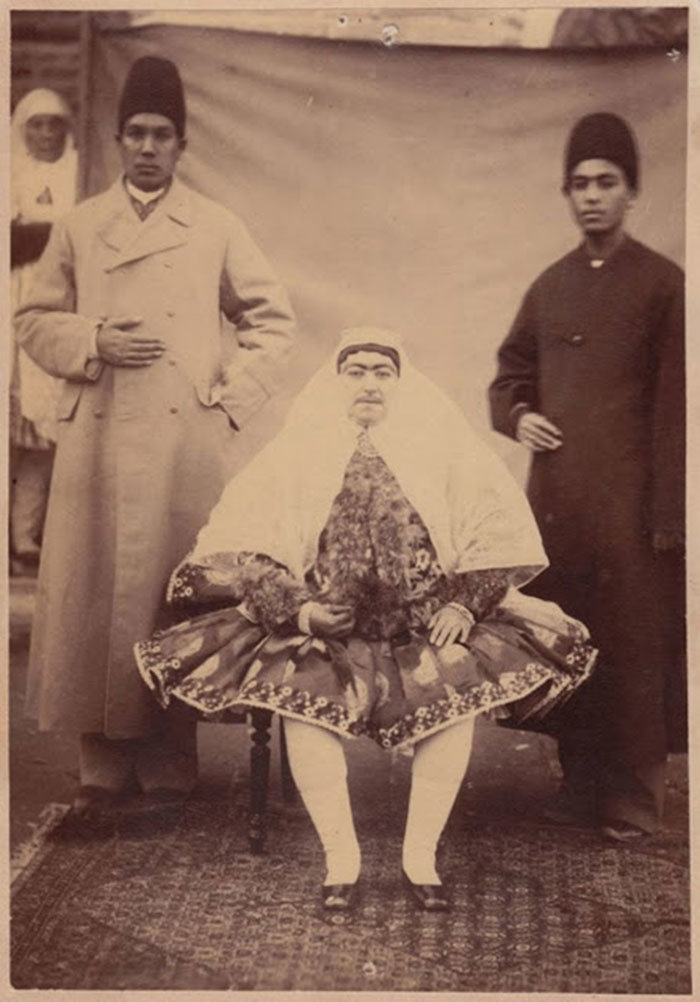
Nasser adDin Shah Qajar. The Shah of Iran and photos of his harem. Or the harem? — Steemit
QAJAR DYNASTY. Ruling family of Iran, 1796 - 1925.. The Qajars were a Turkoman tribe that rose to prominence in Iran during the Safavi dynasty (1501 - 1722). In the turbulent civil wars that broke out after the Safavis were deposed by invading Afghans, the Qa-jars gradually consolidated power until Agha Mohammad Shah Qajar crowned himself shah at Tehran in 1796.

Persian Princess Qajar Dynasty The Beauty Symbol in 19th Century
Iran A Social and Political History since the Qajars , pp. 1 - 17 DOI: https://doi.org/10.1017/9781108569071.001 Publisher: Cambridge University Press Print publication year: 2019 During its long history, Persia has witnessed numerous invasions.

History Daily Persian princess, King of persia, Iran pictures
The Qajar dynasty (also known as Ghajar or Kadjar) is a common term to describe Iran (then known as Persia) under the ruling Qajar royal family that ruled Iran from 1794 to 1925. In 1794, the Qajar family took full control of Iran as they had eliminated all their rivals, including Lotf 'Ali Khan, the last of the Zand dynasty, and had reasserted Persian sovereignty over the former Iranian.

История человечества в фотографиях 11 Варнет
Zahra Khanom or Taj al-Saltaneh (1884 - 25 January 1936; Persian: تاجالسلطنه) also known as Princess Qajar, was a princess of the Qajar dynasty, known as a feminist, a women's rights activist and a memoirist. She was the daughter of Naser al-Din Shah, the King of Persia from 1848 to May 1896.

Cine a fost Prințesa Qajar a Persiei, printesa cu mustata?
Princess Qajar was a feminist, a women's rights activist, and a memoirist. Princess Qajar was the symbol of beauty in the 19th century Iran Princess Qajar was a well-educated, intellectual, free-spirited soul and beauty. Back in the day, poets wrote poems about the beauty of Princess Qajar.

Uğruna 13 Erkeğin İntihar Ettiği Söylenen İran Prensesi Qajar ve Gerçekler
Yüzyılın Güzellik Sembolü İran Prensesi: Qajar. Erkeklerin Aklını Başından Alan, 19. Yüzyılın Güzellik Sembolü İran Prensesi: Qajar Rinascita - Onedio Üyesi. 23.11.2018 - 18:52. Qajar'a aşık olanlar arasında 'Ey Taj' takma adını kullanan İranlı şair Aref Qazvini de vardı. 5. Zahra döneminin ilk feminist kadınları.

Erkeklerin Aklını Başından Alan, 19. Yüzyılın Güzellik Sembolü İran Prensesi Qajar
A number of exhibitions in France and the US are now renewing that interest. 'The Rose Empire: Masterpieces of 19th-Century Persian Art', a large survey of painting and decorative arts, is about to open at the Louvre-Lens (28 March-23 July). 'The Prince and the Shah: Royal Portraits from Qajar Iran' at the Freer | Sackler brings.

İran Şah'ının Eşine 145 Kişinin Aşık Olduğu ve 13 Kişinin Uğruna İntihar Ettiği İddiası
Between 1785 and 1925, an Iranian family of Oghuz Turkish descent ruled Persia, now Iran, in what was called the Qajar Dynasty.Though the first ruler aimed to reunify Iran, over the course of the family's reign they experienced both significant gains and losses of land, losing control of large areas of the Caucasus and Central Asia as a result of the expansionist Russian Empire, which was.

Erkeklerin Aklını Başından Alan, 19. Yüzyılın Güzellik Sembolü İran Prensesi Qajar YouTube
The Qajar dynasty, originally of Turcoman origin and a Safavid affilial, gained prominence in the sixteenth century. Qajar chief Agha Muhammad Shah defeated Zand prince Lotif Ali Khan, thus beginning the Qajar ascent. Russian advent in Georgia, an erstwhile Iranian domain, ensued a series of conflicts between the two sides that spanned the Agha.

Uğruna 13 Erkeğin İntihar Ettiği Söylenen İran Prensesi Qajar ve Gerçekler
viii. QAJAR PERIOD. In the century and a half that constituted the Qajar period (1786-1925), writing of history evolved from production of annalistic court chronicles and other traditional genres into the earliest experimentations in modern historiography. Aiming to fashion a new historical identity, Qajar historiography fused the pre-Islamic.

Persian Princess Qajar Dynasty The Beauty Symbol in 19th Century
The Qajar dynasty ( Persian: دودمان قاجار; 1789-1925) [a] was an Iranian [1] dynasty founded by Mohammad Khan ( r. 1789-1797) of the Qoyunlu clan of the Turkoman [2] Qajar tribe.

Çirkin İran prensesi olarak fotoğraflar'da gördüğümüz ''kadının'' erkek olduğunu biliyor
Iran - Qajar Dynasty, Persian Empire, Middle East: Between 1779 and 1789 the Zands fought among themselves over their legacy. In the end it fell to the gallant Loṭf ʿAlī, the Zands' last hope. Āghā Muḥammad Khan relentlessly hunted him down until he overcame and killed him at the southeastern city of Kermān in 1794. In 1796 Āghā Muḥammad Khan assumed the imperial diadem, and.

WordPress Persian princess, Qajar dynasty, Persian beauties
Iranian Studies Everyday Life in Late Qajar Iran Published online by Cambridge University Press: 01 January 2022 Shireen Mahdavi Article Metrics Get access Cite Rights & Permissions Abstract The social history of Iran in general and that of the Qajar era in particular, has been little studied.

Geschichte aus dem wirklichen Leben der iranischen Prinzessin Qajar TUNLOG
Qajar Iran (/ k ɑː ˈ dʒ ɑːr / kah-JAR listen ⓘ), also referred to as Qajar Persia, the Qajar Empire, Sublime State of Persia, officially the Sublime State of Iran (Persian: دولت عَلیّهٔ ایران Dowlat-e 'Aliyye-ye Irân) and also known as the Guarded Domains of Iran (Persian: ممالک محروسهٔ ایران Mamâlek-e Mahruse-ye Irân), was an Iranian state ruled by.

Women In Iran, Iranian Women, Chanel Frases, Qajar Dynasty, Persian Princess, Popular Instagram
This paper will consider a geographical text prepared by the Qajar court, the Mi'rat al-Buldan or "The Mirror of the Lands," as a critical source for Qajar imperial history, revealing methods for accessing and utilizing local networks of power in their state building projects. The Mi'rat al-Buldan project was undertaken by Nasir al-Din Shah in.

Más Allá del Misterio la Princesa Qajair
The Qajar Period. Before the 19th century Anglo-Iranian relations were sporadic. Periods of engagement alternated with decades of disengagement. After the death of Karīm Khan Zand (1193/1779) contacts between Britain and Iran diminished and were maintained with regularity only in the Persian Gulf as the center of government authority moved north.